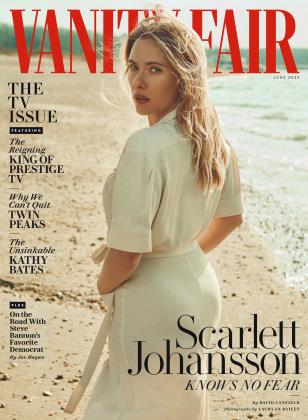Sign In to Your Account
Subscribers have complete access to the archive.
Sign In Not a Subscriber?Join NowThirty-five years after its debut, David Lynch's Twin Peaks still exudes paranormal cool. For its obsessive fans—including many born after it first aired—the mystery is the message
JUNE 2025 MIKE HOGANThirty-five years after its debut, David Lynch's Twin Peaks still exudes paranormal cool. For its obsessive fans—including many born after it first aired—the mystery is the message
JUNE 2025 MIKE HOGAN View Full Issue
View Full Issue






Subscribers have complete access to the archive.
Sign In Not a Subscriber?Join Now